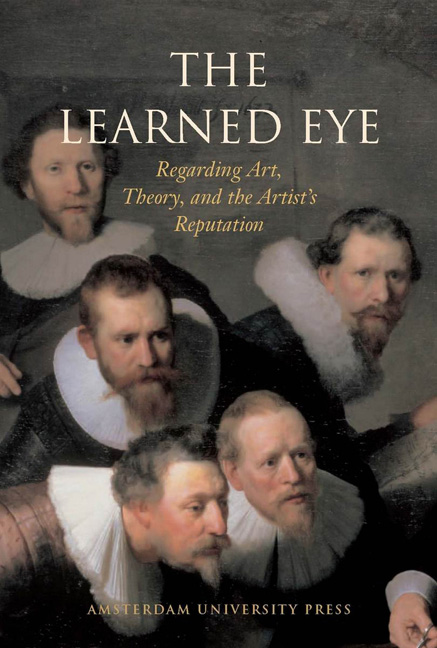Gerard de Lairesse and Jacob de Wit in situ
Published online by Cambridge University Press: 25 January 2021
Summary
As one steps out of Ernst van de Wetering's headquarters, the Kunsthistorisch Instituut at 286 Herengracht in Amsterdam, a turn in either direction, but especially to the right, will lead one past seventeenth- and eighteenth-century houses on both sides of the canal, as well as more recent structures. This experience, repeated week after week and year after year, would contribute to a sense of neighbourhood, and of familiarity and continuity in the course of daily life. If we look back over decades, however, a different picture emerges, one that the historian or any thoughtful person will understand, even without the help of Dutch paintings and literature that address the subject. Works of art, furniture, walls (or at least their coverings), windows, ceilings, staircases and so on all come and go, along with facades and in many instances everything behind them, such as individuals, families, epochs and ages enter the annals or the oblivion of the past. Of course, the ‘Amsterdam School’ office building at 286 Herengracht is itself an example of this kind of progress, having replaced (on behalf of Van Gendt Bros.) the two houses dating from about 1620 that were at 288 and 290 Herengracht, and the splendid town house of about 1720 at number 286. The latter's four-story facade was surmounted with the crest of Jannetje Parvé, which was elaborately framed and flanked by statues of Hercules and a female figure, probably Fortitude. Within six years, however, the first of many different owners had moved in, making the residence their own in all but the crowning element, which itself was destroyed in 1921.
This sort of information, if not these precise details, should appeal to the present volume's dedicatee. In Van de Wetering's devotion to problems of connoisseurship in Rembrandt, to the painter's style, technique, and way of thinking, one discovers not only the usual formal concerns (and then some), but senses also a deep interest in the artist himself, and in his workplace, which in Amsterdam was located in the now famous house at 2-4 Jodenbreestraat, and then at an address (184 Rozengracht) that for many readers will not ring a bell. They may know, nonetheless, that both streets were in artistic sections of the city, with numerous painters, collectors, dealers, and other sympathetic parties (Vondel, for example) living nearby.
- Type
- Chapter
- Information
- The Learned EyeRegarding Art, Theory, and the Artist’s Reputation, pp. 190 - 205Publisher: Amsterdam University PressPrint publication year: 2005



